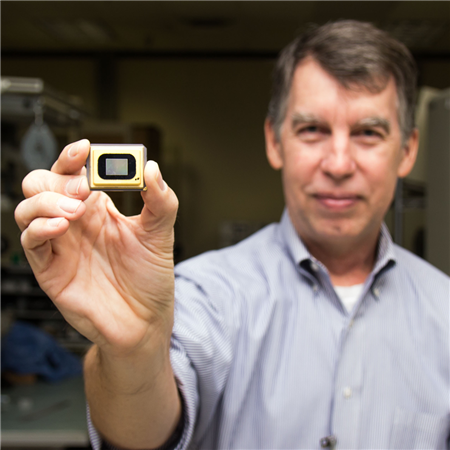SSZTAB4 march 2017
I had the privilege of representing Texas Instruments and chairing a conference titled “Emerging DMD-Based Systems and Applications” at SPIE Photonics West this year. Photonics West is a huge conference with over 20,000 attendees, 4,800 papers presented, 1,300 company exhibitions and three conference groupings (BIOS, LASE, and OPTO). I continue to be amazed at the creative applications being explored with the digital micromirror device (DMD). This was the ninth year that TI DLP® Products sponsored the DMD conference track at Photonics West. A total of 24 papers were presented at the DMD conference covering topics including advanced manufacturing, 3D metrology, spectroscopy, biomedical imaging, computational imaging and beam shaping. Additionally, papers from biomedical imaging, laser applications and optoelectronics tracks also included information on DMDs throughout Photonics West. This show demonstrated the incredible range of applications demonstrating the versatility and flexibility of the DMD. Here are a few of the emerging applications discussed during the conference.

3D Printing Innovations
This year Photonics West included an Application Track focused on 3D printing for advanced manufacturing and highlighted innovative ways to apply this rapidly growing technology. DLP technology is well positioned to support this growth. Four papers in the conference discussed various aspects of 3D printing using a DMD. All the authors emphasized flexibility, resolution (in some cases sub diffraction features), and precise positioning as significant advantages.
Leading Edge 3D Machine Vision
The 3D metrology session had the highest attendance indicating growing interest in this DMD application. There were four papers presented including two invited talks by Song Zhang (Purdue University) and Peter Muenstermann (AICON 3D Systems). Prof Zhang discussed techniques he has developed with DLP technology systems resulting in high-speed 3D imaging using defocusing methods versus sinusoidal methods. The defocusing method enabled higher speeds and higher accuracy measurements generating better phase quality. Mr. Muenstermann provided an interesting and thorough overview of optical 3D scanners. He concluded that DMD-based designs had a clear advantage due to high brightness, precise linearity, and flexible use with different projection colors. In addition, Jeremy Gribben (Ajile Light Industries) presented an interesting concept where a DMD-based projector not only projected images but captured them as well. This approach enabled sub-pixel accuracy and improved overall depth measurement accuracy.
Spectroscopy Solutions
Spectroscopy is an application well suited for DLP technology. The session on spectroscopy and hyperspectral imaging included five papers, two of which were invited. Dr. Elad Harel (Northwestern University) presented the use of a high-speed DMD that eliminated the need for costly array detectors while speeding up acquisition by several orders of magnitude. Dr. Daniel Lau (University of Kentucky) has developed an interesting technique where he employs a DMD to collect spectrally rich scenes as well as a detailed spatial structure. This approach improves reconstruction quality of compressed measurements especially at the edges of the image where reconstruction is very difficult.
Biomedical Imaging
One of our more popular and well-attended sessions has always been one focused on biomedical imaging. This conference was no different. Varied and creative applications ranged from microprinting of biomolecules to improved high-resolution biological imaging with reduced photobleaching. In addition to the five papers presented at the DMD conference, as I wandered around the other conferences at Photonics West, I found at least ten more papers discussing the use of a DMD in biomedical applications…and I am sure there were more that I didn’t catch. Specific topics included imaging through scattering media, optical tomography, and ophthalmic imaging.
I hope to see you next year in San Francisco at Photonics West 2018. If you are working with DLP technology, submit a paper to the DMD conference and share your work with the DLP technology community. We will be releasing the call for papers soon with more information about how to submit an abstract. I am impressed with the creativity and learn so much every time I chair this conference. Thank you for all the contributions and interest.
For more information about DLP technology and supporting applications, please visit ti.com/dlp.